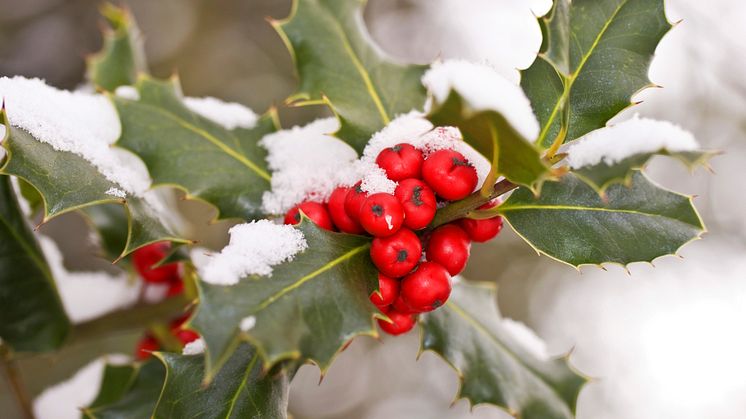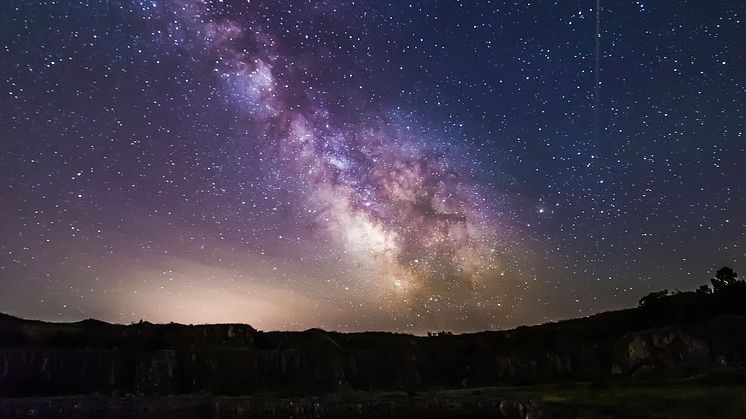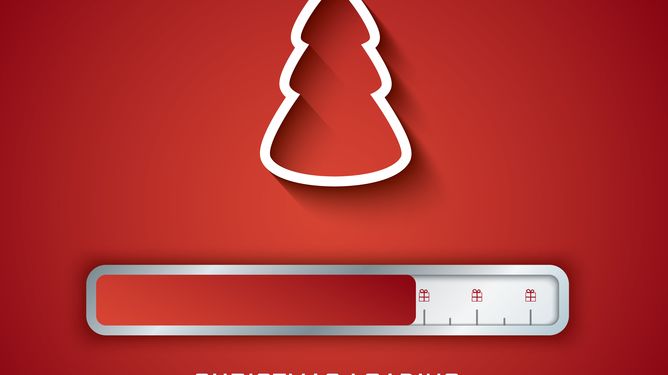
Press release -
COMMENT: Five dark literary Christmases that don’t involve Ebeneezer Scrooge
Claire Nally, Senior Lecturer in Twentieth-Century English Literature at Northumbria University, discusses alternative literary Christmases for The Conversation.
When we think of literature with festive themes, many will think first of Charles Dickens' The Christmas Carol (1843). Ebeneezer Scrooge’s journey from capitalist miser to lover of humanity, via the ghosts of Christmas past, present and future, is as much a part of the festive season as turkey and crackers.
But not all texts involving Christmas are quite as effusive about human redemption and kindness. Here are my top five festive scenes for those that appreciate the darker side of Christmas.
1. Sylvia Plath: Balloons
“Since Christmas they have lived with us,” writes Plath of the leftover balloons in this poem. Christmas is not always a time of the year that she cherishes. In her diary, she refers to one December 25 that left her “overstuffed and dull and disappointed, the way I always do the day after Christmas”.
In Balloons, Plath is speaking to her daughter. She writes:
"Your small Brother is making
His balloon squeak like a cat."
She describes her son biting the balloon and sitting with “A red/ Shred in his little fist”. Alongside the red symbolism that is so prominent in Plath’s poetry, the gesture feels hauntingly violent.
The poem was written on February 3 1963, six days before Plath took her own life, leaving behind those two children to one of the coldest English winters of the century.
2. Emily Brontë: Wuthering Heights
Chapter seven of Wuthering Heights presents a rural homely Christmas – before all is ruined. The housekeeper-narrator Nelly Dean sets the scene:
"[After] putting my cakes in the oven, and making the house and kitchen cheerful with great fires, befitting Christmas Eve, I prepared to sit down and amuse myself by singing carols, all alone … I smelt the rich scent of heating spices; and admired the shining kitchen utensils, the polished clock, decked in holly, the silver mugs ranged on a tray ready to be filled with mulled ale for supper; and above all, the speckless purity of my particular care – the scoured and well-swept floor."
The context is that Hindley Earnshaw, the master of Wuthering Heights, is bent on making his adoptive brother Heathcliff’s life a misery. Heathcliff was taken in as a homeless gypsy boy by Hindley’s father, who grew more fond of him than his son. Now that the father is dead, Hindley is finally able to take revenge.
Hindley’s sister Catherine, with whom Heathcliff is in love, has just returned from five weeks away. After Hindley tells her she may treat him as a servant, she greets him haughtily, identifying how dirty he looks. Nelly fears this has deeply wounded Heathcliff and persuades him to become more presentable. Her efforts are thwarted when Edgar Linton, Catherine’s rich suitor, laughs at Heathcliff’s long hair. Heathcliff seizes “a hot tureen of Apple sauce” and throws it at him, resulting in a sound flogging from Hindley.
3. James Joyce: The Dead
Joyce said the short stories in Dubliners were a portrait of his home city as “the centre of paralysis”. The final story, The Dead, features Gabriel Conroy, an aspirational journalist visiting his ageing aunts on a snowy Feast of the Epiphany. It’s a very subtle story that deals with disappointment, betrayal, lost love, social class and Irish nationalism. Here is Joyce’s description of the dinner table:
"In the centre of the table there stood, as sentries to a fruit-stand which upheld a pyramid of oranges and American apples, two squat old-fashioned decanters of cut glass, one with port and the other dark sherry. On the closed piano a pudding in a huge yellow dish lay in waiting and behind it were three squads of bottles of stout and ale and minerals, drawn up according to the colour of their uniforms, the first two black, with brown and red labels, the third and smallest squad white, with transverse green sashes."
Notice how eerily military everything is in this scene, reflecting the status of colonial Ireland in the early 20th century.
By the end of the story, we have a moving account of snow falling across the country, just as it did during the Great Famine of 1845-52. In many ways, this renders the dinner table even more unreal. Nobody actually eats very much, it seems.
4. Nikolai Gogol: The Night Before Christmas
This short story comes from Village Evenings Near Dikanka, a Ukrainian-themed collection. It is ostensibly for children, but there is nothing conventionally merry about the narrative. Christmas is very quickly disrupted by the Devil and a witch on a broomstick.
The Devil wants revenge over our lovelorn hero, the devout blacksmith Vakula, for making grotesque portraits of him for the church. He creates a blizzard, so that “the air became white and thick with hurtling snow”. He steals the moon, and hides in a coal sack.
Vakula triumphs in the end, but not before we’ve been taken to St Petersburg in search of Catherine the Great’s slippers, which Oksana, Vakula’s intended, is demanding before she will marry him. When Vakula meets the empress, she agrees to give them to him:
If you want shoes like mine, that’s easy to arrange. Right away there, bring him my most expensive pair, the ones with gold embroidery.
5. Thomas Hardy: A Christmas Ghost Story
This poem, dated Christmas Eve 1899, is an acerbic reflection on the nature of war and the ineffectiveness of Christianity. The speaker is a British soldier, killed in South Africa during the Boer War. It’s a highly combative poem, featuring a series of accusatory questions, culminating in this devastating statement:
"But tarries yet the Cause for which He died."
The cause in question is peace on earth and goodwill to all men. Hardy republished the poem during World War I, as a statement of pacifism. Alas, 100 years later, it is a lesson which still goes unheeded.
This article was originally published on The Conversation. Read the original article.
Topics
Northumbria is a research-rich, business-focused, professional university with a global reputation for academic excellence. To find out more about our courses go to www.northumbria.ac.uk
If you have a media enquiry please contact our Media and Communications team at media.communications@northumbria.ac.uk or call 0191 227 4571.











